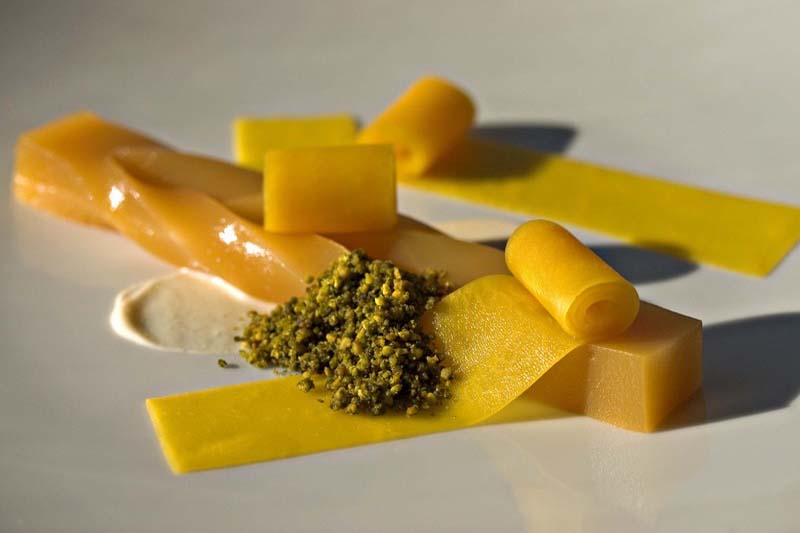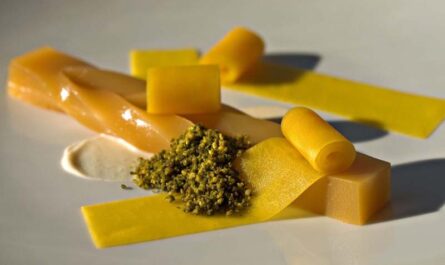Gellan gum is a polysaccharide extracellular polymer polymer produced by the bacterium Sphingomonas elodea. Since its discovery and commercialization in the late 1980s, gellan gum has emerged as a versatile plant-derived hydrocolloid additive used in various food and non-food applications. Let’s take a deeper look into what gellan gum is, its properties and uses.
Chemical Structure and Properties
Gellan gum is a linear anionic polysaccharide consisting of tetrasaccharide repeats of glucose, glucuronic acid, and rhamnose. Its chemical structure endows it with unique gelling and thickening properties. Some key properties of gellan gum include:
– Gellan gum forms clear, thermoreversible gels over a wide range of pH levels (3-9). The rigidity of the gel can be adjusted based on the concentration of gellan gum, temperature, ions present and processing conditions.
– It has high melting points ranging from 75°C to 95°C depending on gel concentration and presence of cations. This makes gellan gum gels very stable at elevated temperatures.
– Gellan gum solutions exhibit high viscosity even at very low concentrations (0.1-0.5% w/w). This viscosity increases with increasing concentration and decreasing temperature.
– In the presence of cations like potassium, calcium or sodium, gellan gum forms soft, elastic gels ideal for various food applications. Chelating agents can be used to modify the gel texture.
– Gellan gum is non-ionic, vegan, tasteless and odourless. It does not affect the flavor, color or nutritional profile of foods.
Food Applications
Thanks to its desirable functional properties and regulatory approval, gellan gum has widespread use in the food industry:
– Dairy Products: It is used to make low-fat yogurt, dairy desserts and spoonable dressings by facilitating water binding. Gellan Gum adds body and creaminess.
– Bakery Products: As a stabilizer, emulsifier and thickener, it improves volume, texture and shelf life of cakes, pancakes, pie fillings etc.
– Sauces, Dressings & Soups: Gellan gum helps achieve desired viscosities and provides stability against sedimentation in these products.
– Meat and Poultry Products: It acts as a binder and fat replacer in ground meat, sausages and poultry products for moisture retention.
– Beverages: Both hot and cold functional drinks made with gellan gum have a smooth, creamy mouthfeel without affecting clarity.
– Confectionery: It is used to prepare gummy candy and chewing gum with attractive textures. Gellan gum gummy bears and rings are popular.
Non-food Applications
Beyond food uses, gellan gum also finds applications in different non-food sectors:
– Personal Care Products: As a stabilizer and thickening agent, it is used in creams, lotions, gels and other skin/hair care formulations.
– Pharmaceuticals: Gellan gum formulations offer sustained drug release for ophthalmic, oral and topical drugs due to its gelling properties.
– Biotechnology: Its ability to form soft, elastic hydrogels at low concentrations makes it suitable for 3D cell cultures and tissue engineering applications.
– Printing: Gellan gum is being evaluated as an edible ink for applications like food printing and pharmaceutical printing.
– Agriculture: In controlled release fertilizers, gellan gum encapsulates nutrients and releases them gradually over time for optimized plant uptake.
Regulatory clearance and sustainability credentials, gellan gum has truly emerged as a 21st century hydrocolloid. Constant R&D is further expanding its applications in both food and non-food sectors. Going forward, large-scale production technologies will boost availability and applications of this plant-derived gelling agent.
*Note:
1. Source: Coherent Market Insights, Public sources, Desk research
2. We have leveraged AI tools to mine information and compile it



